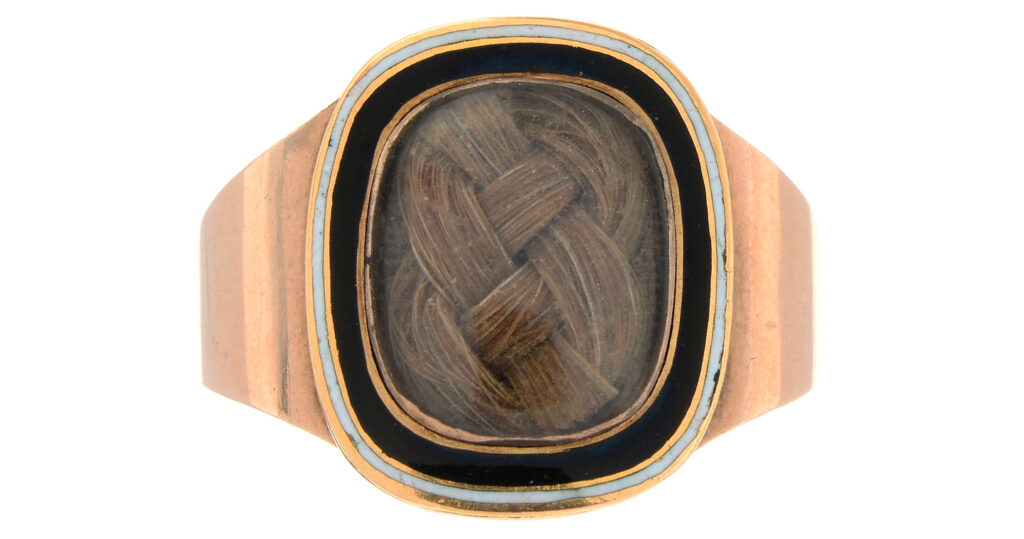A Mourning Ring for Oswald Mosley, 1757
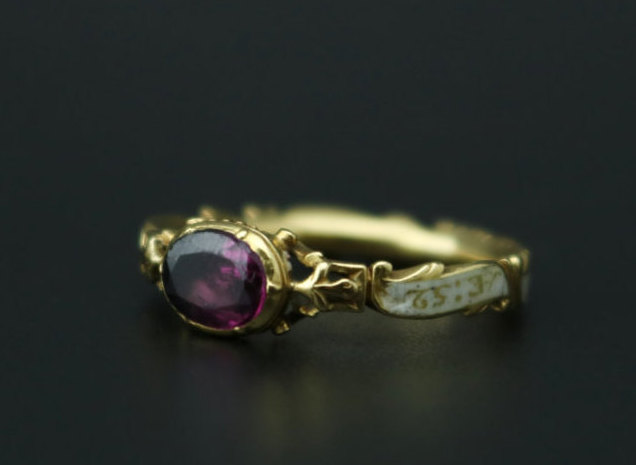
A late Rococo, fleur-de-lis ring with a purple foil/paste set bezel and white enamel band featuring the name of Oswald Mosley, who passed away at the age of 52 in 1757. This ring was created at the very end of the Rococo period, as the Neoclassical designs and symbols would quickly eclipse this design in the 1760s. The scroll/ribbon band was commonplace in the Rococo period (early 18th century to c.1760s), but having the name of the deceased in the band continued well into the 19th century. Mourning bands adapted through different styles of art, from the Baroque through to the Empire styles of the Victorian period.
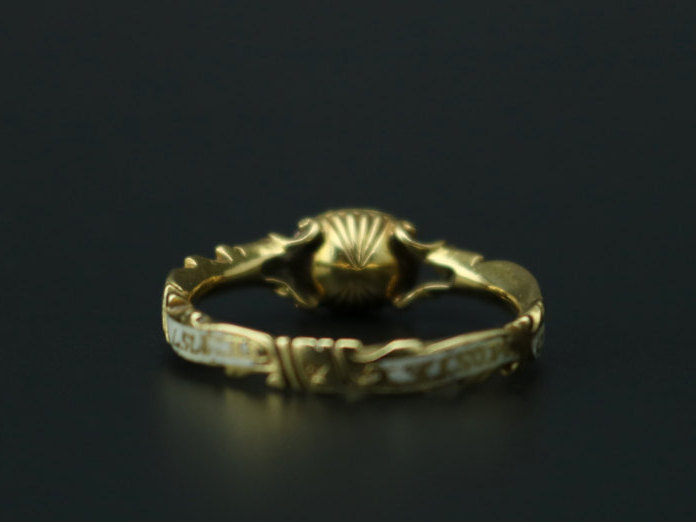
Of note in this ring is its use in colour. The possible foil/paste needs to be tested, as it may be an amethyst, however, the sentiment in its use remains the same. Purple was an important colour for both sentimental and mourning purposes in jewellery of the 18th century, with its underlying meaning of love. This is a factor which became only more prominent as the 19th century continued the development of sentimental jewels.
Amethysts were liberally used in mourning jewels of the 1780s, being a common gem that surrounded an oval shaped bezel, which usually held a sepia sentimental painting.
Associated with the Church, due to the the intrinsic connection through the colour purple (robes), amethysts are used in Bishop’s rings and crosses. The purple colour also allows for a third-stage mourning colour to be used in costume, which was formalised after the 1817 statement on Court Mourning by Lord Chamberlain. The religious connection here cannot be overstated, especially post 1840 and with the instillment of family values by Queen Victoria, following on from the Gothic Revival movement. A perfect amethyst should be deep purple and reflect colours of red when turned in the light.
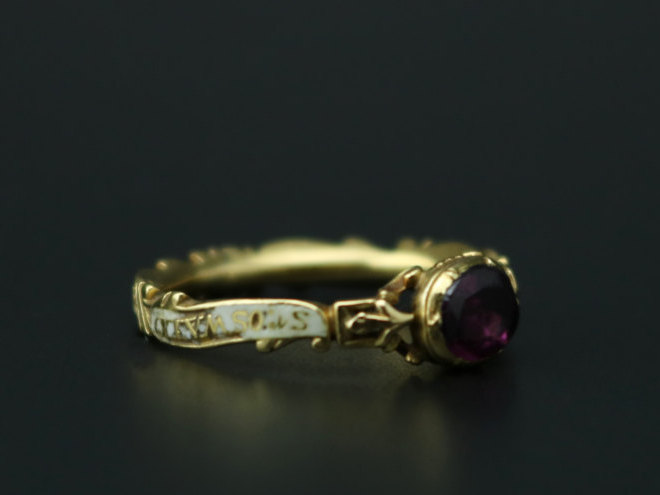
White enamel, used inlayed through the ribbon design, indicates the purity/virginity/marital status of the deceased. It is more than simply how the family felt about the deceased, but more about how he/she were presented within society. One could assume that Oswald Mosley was unmarried at the age of 52, or perhaps had religious leanings. Further insight into genealogy could prove or disprove this. Having someone wear or keep this in society makes a statement about this.
The fleur-de-lis is an interesting design for the above ring, especially for a piece of this time. The significance of the motif (as the dedication doesn’t appear to be French) is probably in the symbolism of a lily (lis) growing from the tears of Mary at the foot of Jesus’ cross, hence purity, or the three petals being associated with the trinity. There is also the association with the symbol meaning passion, and when combined with the diamond (true [eternal] love), it becomes a powerful statement. It was also a popular design motif, as French design led much of the fashion of the 18th century, particularly during the c.1750-c.1800 period. Having this symbolism on the shoulders of the ring marks a design flourish that is fashionable as it is sentimental.
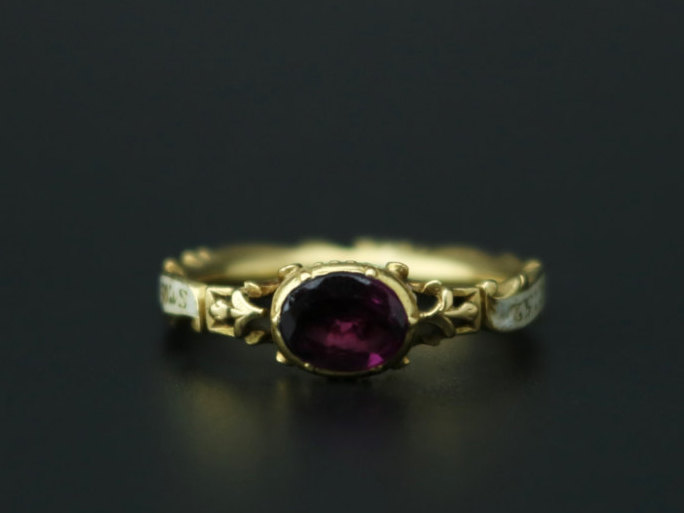
The rolled inner band is typical design for the time and something to look out for in identifying 18th century jewellery. With the rosette shape in the reverse of the bezel, it looks complete, without any tampering to the band, as many examples of this time period have been.




